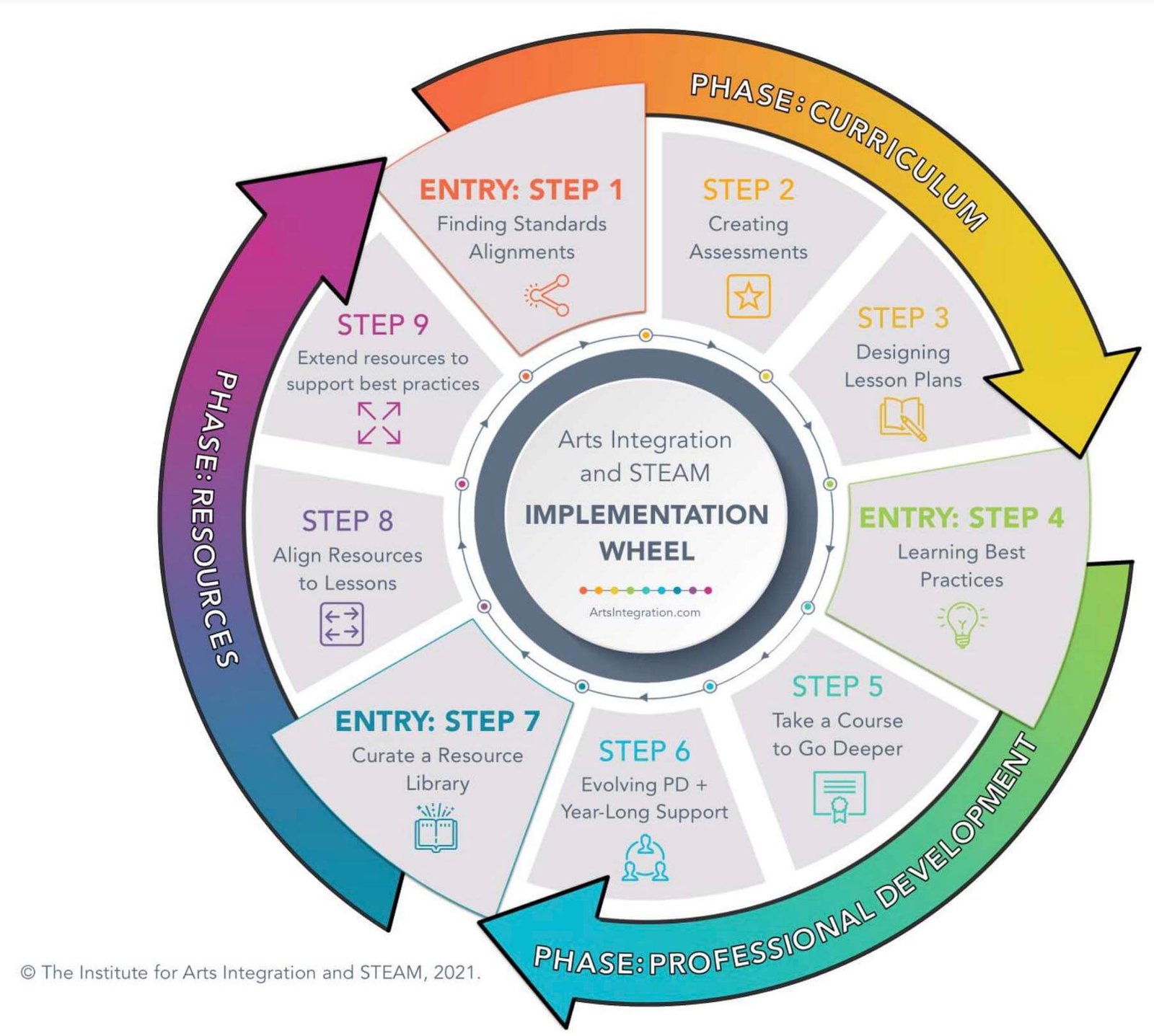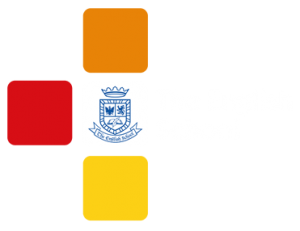STEAM AT TES
-
-
- STEAM is an integrated approach to learning which requires an intentional connection between standards, assessments and lesson design/implementation.
- True STEAM experiences involve two or more standards from Science, Technology, Engineering, Math and the Arts to be taught and assessed in and through each other.
- Inquiry, collaboration, and an emphasis on process-based learning are at the heart of the STEAM approach.
-
Retrieved from: Arts Integration (2022) found at https://artsintegration.com/what-is-steam-education-in-k-12-schools/#whysteam
OBJECTIVES
STEAM at TES program is a sustainable and systemic approach to infuse Science, Technology, Engineering, Arts and Mathematics into every part of students’ educational experience – across all sections of the school, and in partnership with local and global communities.
This involves cultivating agency, problem solving, creativity, futuristic design and participatory, equitable and innovative learning environments. We use evidence-based practices that actively involve and inspire all students in their social, emotional, and academic growth and contribute towards a more sustainable local, national and global community.

STEAM IMPLEMENTATION PATH
According to our research and professional development experiences, we plan to follow this nine-step plan. In the implementation wheel by Art Integration and STEAM (2021), our community will be involved and take part in three different phases: Curricular, professional development and resources.

STEAM IN ACADEMIC RESEARCH (STATE OF THE ART)
Since STEAM has been a new perspective to education, it is important to consider how this methodology is implemented, constructed, and reviewed in and out classrooms. To achieve this, a deep review on the state of the art is required to unveil some of the projects that have impacted education in three different contexts. First, an international review of projects and perspectives in America, Europe and Asia. Then, an analysis on Colombia’s projects using STEAM. Finally, a closer look at the projects from Bogota in regards to our surrounding community.
America, Europe and Asia
Despite education being one of the most important fields in life, many times it is not properly funded and ignored. However, this might not seem to be the case in the United States of America. According to the US Department of Education (2022), there are twelve main department offices that support STEM in US territories. These different resources help schools and institutions to develop, implement and evaluate multiple programmes such as Education Innovation and Research Program, Minority Science and Engineering Improvement Program, and the Federal TRIO Programs. Through these investments, multiple communities, including both urban and rural ones, have been impacted. Moreover, America’s Strategy for STEM Education (Executive Office of the President, Office of Science and Technology Policy, 2018) has defined three main goals related to this methodology. They are focused on building strong literacy about STEM, increasing STEM in education and preparing talented workforce in STEM.
This helping and supporting perspective towards STEAM has also been found in other continents. In Europe, several agencies contribute to the preservation of projects that involve Science, Technology, Engineering, Mathematics, and Arts. Specifically, the European Schoolnet has collaborated with other companies to develop projects that foster new techniques and new approaches to teaching and learning. Some of these projects are Go-Lab, Intel Science fairs evaluation, Next-Lab, RRI (Responsible Research and Innovation) Tools, Space Awareness, and STEAM Alliance (European Schoolnet, n.d.). All in all, Europe has also devoted a considerable amount of resources to the research and analysis of programmes that look forward to changing the schools’ old-style techniques.
Last but not least, Asian countries are empowering pupils, teachers and institutions to promote STEAM in education. SeadSTEM (Southeast Asian Digital STEM Platform, 2020) affirms that STEAM education is shaping the future, and it is important to develop 21st Century skills that match the ever changing societies we live in nowadays. In this regard, Malaysia the Ministry of Education created a plan for 2025 that evaluates the analysis, critical thinking, and decision making skills of students (Southeast Asian Digital STEM Platform, 2020). This situation resembles the one in Cambodia. There, the government created a roadmap that strives to implement STEM in the country, and it considers the professional development of teachers, administrators, managers and technicians that are involved in education all around the country. Finally, another meaningful strategy is the National Science of Technology Fair (NSTF) in the Philippines, where the STEAM approach is highly empowered from innovation in Education.
Colombia
In regards to our local country, different educators, institutions and programmes have been created to foster STEAM education. The Ministry of Education, local government and non-profit organizations have been investing efforts and resources to create projects, curriculums, and opportunities that benefit equity, dignity and innovation in education. For example, Siemens company has been leading a project since 2011 in Colombia called Experimento. In this experience, rural communities and institutions in cities have been guided into the inclusion of comprehensive STEAM education by workshops that reach students and teachers (about 250000 beneficiaries) (Siemens Stiftung, n.d.).
Another relevant project is linked to the MEN (National Ministry of Education, 2019). STEAM + Género is a proposal looking for a strong first education with a gender equity approach. This curriculum determines how teachers, administrators and politicians should address new educational policies that determine a higher quality system in comparison to the current one. Indeed, as a co-strategy, the MEN offered a scholarship for young girls to study science and technology called Chicas STEAM 2022 (Valderrama, 2022).
Furthermore, as national communities, STEM Education Colombia, Tejido STEM Colombia y Conastem provide multiple opportunities to develop and help national STEAM projects, STEAM teachers and passionate educators interested in testing, developing and evaluating new approaches to education. These three organizations want to promote and share innovation in Colombia through a large network of perspectives.
Why STEAM is an institution?
According to many authors, STEAM and STEM approaches to education have been impacting the system positively due to their relevant contributions to the development of soft skills and real-life solving skills that will remain in the society for many generations. According to Adamia et al. (2020, p. 43), “the future belongs to technologies, and the future of technologies belongs to teachers of a new format ”. Thus, it is relevant to form both teachers and students according to the 21st century needs. STEAM approach can help to achieve this common goal that involves international mindedness and global citizenship.
Moreover, teaching and learning from isolated subjects does not contribute to a proper understanding of the world since nature and learning is all interconnected. As Adamia et al. (2020) confirms, knowledge in practice is highly interrelated. Indeed, this perspective to education is leading towards a four-step process that develops soft skills in everyone involved in the learning/teaching process. Santillán Aguirre et al. (2020) state that the first step is linked to defining problems in the real world. Then, proposals of new solutions to the problem and development of metacognitive skills appear in the process. Third, there is a design process that invites students to use all tools available to them in order to solve the problem. Lastly, there is a change in society due to the interconnectedness created in all knowledge subjects.
Another important aspect to review when it comes to STEAM is creativity. Aguilera & Ortiz-Revilla (2021) determined that there are four types of creativity fostered by STEAM approach. The process, the context, the person, and the product are the four categories aforementioned related to creativity and implemented during the development of STEAM projects in scholar contexts. Indeed, the authors mentioned that it is paramount to continue implementing this strategy in classrooms for having more data to study and conclude about the effectiveness of STEAM approach. Thus, it is imperative that we as administrators, teachers and governments get involved in contributing to academy research and personal development.
Previous advantages have proved that STEAM contributes to education. However, there is even a bigger contribution to societies. This approach, as Perignat & Katz-Buonincontro (2018) declare, engages particularly minorities and females into education and innovation, two aspects that in many contexts have been banned for them. This also supports the fact that Colombia is leading and developing opportunities for these two main public targets for constructing peace from education.
Lastly, it is necessary to remember the relevance of STEAM nowadays. Lima et al. (2020) proclaim that STEAM education “is essential for our current educational systems as specified in several reports and shown by the quantity of funds and efforts devoted to this.” (p.15). Consequently, it is fundamental to introduce it into the teaching and learning practices that all educational institutions apply everyday.

Olga Mónica Polo Poveda
STEAM Coordinator – Primary tutor
I am a modern languages teacher with a M.Ed in Advanced Education with emphasis on STEAM. Since the first day at TES, I have enriched my personal and professional experience with love and care, every single day. My passion for teaching has led me to unforgettable ways of supporting students, it has helped me to think outside the box and be a risk-taker when facing new challenges.
Being a leader in the implementation of the STEAM program in our school motivates me indeed to share my passion and love for teaching within our community. This is a one life opportunity to really take action and be part of such an amazing journey. STEAM more than a program is a mindset that makes our school even greater.

